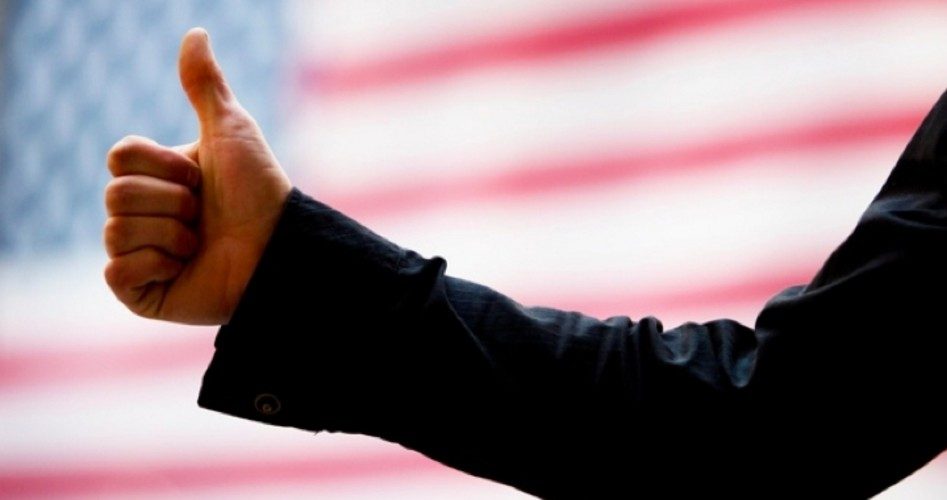
With the partial government shutdown now in its fifth day, the rhetoric among Democrats and among the pro-Beltway mainstream media has reached a fever pitch, with the leaders of the Republican opposition being likened to jihadists and terrorists, and pilloried for their alleged callous and irresponsible behavior. The federal government, as a Reuters story observed on October 1 — without a trace of irony — has had to divide its functions and employees between “essential” and “non-essential,” and furlough or idle the latter. Thus, we now have the federal government reduced to discharging only “essential” functions — which, it turns out, is still roughly 85 percent of what it was doing prior to October 1.
Forgotten or ignored in all the jockeying for political advantage is the fact that the Founders limited the federal government in the Constitution to those functions that they deemed “essential” — that is, those things which only the Federal government could properly do, like negotiate treaties with foreign powers, declare and conduct war, run a postal system, and deal with disputes between the states. And, lest there be any doubt among their posterity of the limits imposed on their federal creation, the Founders then clarify in the final amendment of the Bill of Rights — the Tenth — that powers not expressly delegated by the Constitution to the federal government were reserved to the states or to the people. The federal government, in other words, may exercise only those powers enumerated in the Constitution.
Those enumerated powers were the “essential functions” of the federal government, though not necessarily of government in general. The Founders left open the possibility that state or local governments would choose to discharge functions above and beyond what the federal government was authorized to do. In the founding era and for generations thereafter, most government was, in fact, state or local. On the states, the Constitution only imposed the condition that they enjoy a republican form of government, but the latitude inherent in the federal system that they created ensured a wide diversity in the types of functions and services that state and local governments would have the power to perform.
During the 19th Century, for instance, many states, following the example of Virginia, decided to create state universities which had as their core curriculum the agricultural sciences. It was widely believed that encouragement of agriculture via teaching and research was enough of a public good to warrant funding at the state level. During that same period, local governments began setting up schools that were publicly funded, and by the 1870s all states had at least some publicly-funded elementary schools. Soon thereafter, states began passing laws making some level of education compulsory, reasoning that it would be in the public good. In other words, the view developed that providing schools and universities came to be regarded as an “essential function” of government — but not of the federal government. In point of fact, America’s public and private education flourished until well into the 20th Century, when the federal government became involved in education. Now, public schools are a disaster, and tuition at colleges and universities is far beyond what most people can afford. And this, because, at some juncture, Americans allowed themselves to be persuaded that federal government involvement in public (and private) education — dictating and standardizing curricula, subsidizing student loans, subsidizing research, among many other things — is an “essential function” of the Federal government.
The same could be said for much of what the federal government is now involved in. Nowhere does the Constitution authorize federal involvement in education, in health care, in food safety, in environmental regulations, in the stock markets, in the automobile industry, in the insurance sector, in the creation and maintenance of national parks, in the regulation of pharmaceuticals, in the legalization (or illegalization) of drugs, in local law enforcement, in the regulation of firearms use and ownership, in the providing of retirement insurance (Social Security), in the stipulation of minimum wages, or any of a host of other things now deemed “essential.”
The federal government, if reduced to its constitutionally mandated range of functions, would be only a tiny fraction of the sprawling, grasping monstrosity that now confronts us. Instead of presuming to run everything, the federal government would focus on exercising those few powers authorized by the Constitution. It would correspondingly cost a fraction of what it does now, and would begin, miraculously, to live within its means.
The current shutdown, involving as it does the elimination of only a small part of constitutionally non-essential government, is nonetheless a welcome development. The very fact that Washington has been forced to admit that much of what it does is “non-essential” is an important wake-up call.
But the terms of the debate are still being framed in terms of prudent public policy rather than constitutionality, which is why most extra-constitutional activities of the federal government are in no political jeopardy — yet. We may hope, however, that the current shutdown, like the sequester earlier this year, will lead to permanent reductions in the size and cost of the federal government, and the gradual public awareness that, after all, those services were not needed, at least at the federal level. Over the longer haul, perhaps, government shutdowns and cutbacks could become a habit, leading, eventually, to a much smaller, constitutional federal government that is more of a blessing for Americans than a burden.



